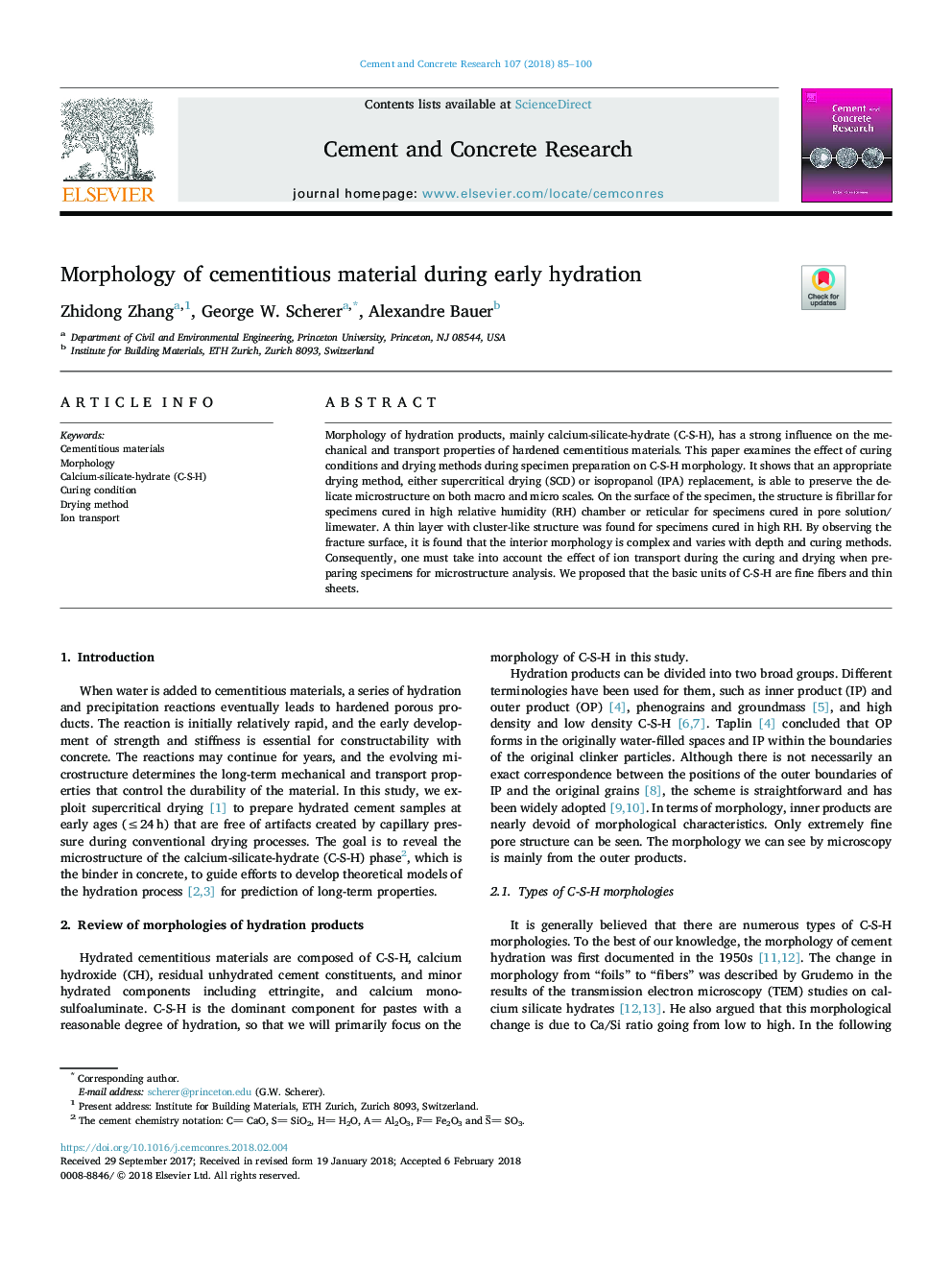| Article ID | Journal | Published Year | Pages | File Type |
|---|---|---|---|---|
| 7884730 | Cement and Concrete Research | 2018 | 16 Pages |
Abstract
Morphology of hydration products, mainly calcium-silicate-hydrate (C-S-H), has a strong influence on the mechanical and transport properties of hardened cementitious materials. This paper examines the effect of curing conditions and drying methods during specimen preparation on C-S-H morphology. It shows that an appropriate drying method, either supercritical drying (SCD) or isopropanol (IPA) replacement, is able to preserve the delicate microstructure on both macro and micro scales. On the surface of the specimen, the structure is fibrillar for specimens cured in high relative humidity (RH) chamber or reticular for specimens cured in pore solution/limewater. A thin layer with cluster-like structure was found for specimens cured in high RH. By observing the fracture surface, it is found that the interior morphology is complex and varies with depth and curing methods. Consequently, one must take into account the effect of ion transport during the curing and drying when preparing specimens for microstructure analysis. We proposed that the basic units of C-S-H are fine fibers and thin sheets.
Keywords
Related Topics
Physical Sciences and Engineering
Engineering
Industrial and Manufacturing Engineering
Authors
Zhidong Zhang, George W. Scherer, Alexandre Bauer,
